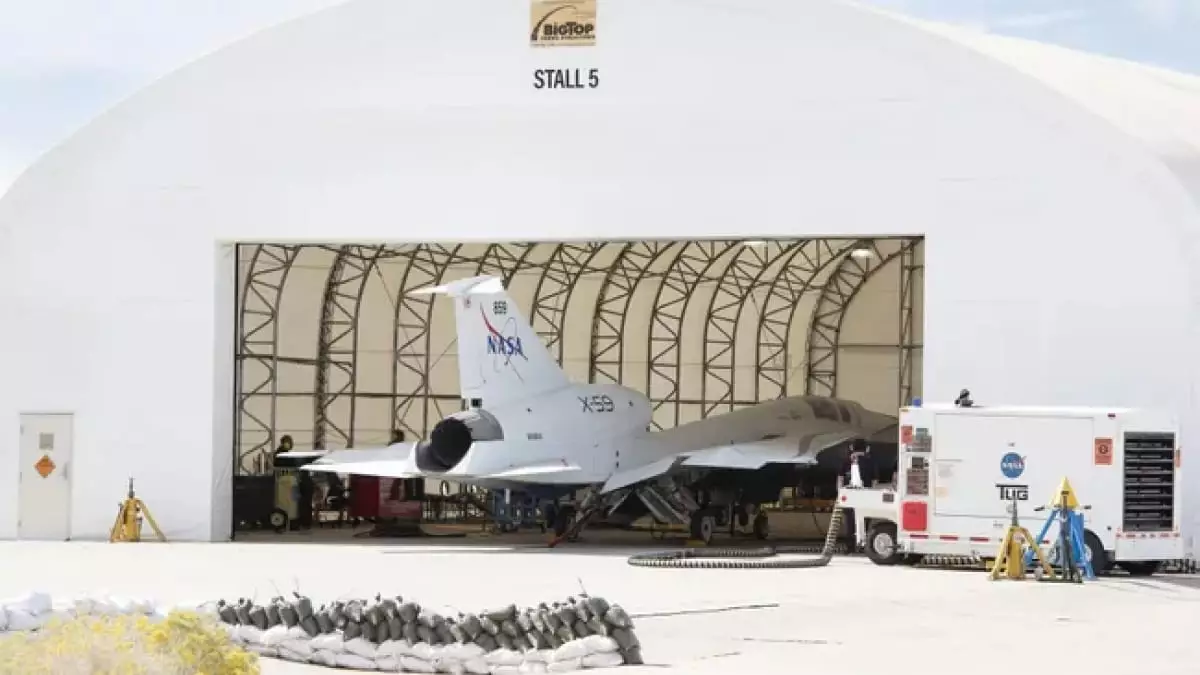NASA is on the brink of revolutionizing air travel with its experimental X-59 Quiet SuperSonic Technology (Quesst) aircraft. Recently, engineers successfully conducted the first engine tests at Lockheed Martin’s Skunk Works facility in Palmdale, California. This milestone represents a pivotal moment in developing an aircraft engineered not just for speed but for a new standard of noise reduction, with the ambition of allowing supersonic flights over populated areas.
Starting from late October, a series of methodical engine tests have taken place. These tests are set up in phases, enabling the engineering team to fine-tune the X-59’s systems integration and overall performance. Initially, low-speed engine operations allowed engineers to conduct thorough inspections, identifying potential leaks and ensuring the functionality of hydraulic and electrical components without the full power of the engine. The successful gradual approach provides a safety net, ensuring that every aspect of the aircraft is operationally sound before proceeding to more rigorous assessments.
Jay Brandon, who serves as the chief engineer for the X-59 project, emphasized the significance of these initial assessments. He noted that these tests acted as a vital “warmup,” confirming that the engine cooperatively supports various crucial systems aboard the aircraft. The propulsion system consists of a modified F414-GE-100 engine, a variant designed for the robust Boeing F/A-18 Super Hornet utilized by the U.S. Navy.
What sets the X-59 apart from conventional supersonic jets is its innovative design aimed at mitigating sonic booms. NASA’s extensive research has simulated the aircraft’s potential sound levels using existing F/A-18 jets, with the ultimate goal of reaching speeds of Mach 1.4 while cruising at an altitude of 55,000 feet. The aircraft features a long, narrow nose over 11 meters in length, ingeniously crafted to minimize disruptive noise to just a gentle “thump.” This design underscores NASA’s ambition to enforce a shift in regulations, opening the door to quieter supersonic flights over crowded urban environments.
A remarkable facet of the X-59’s design is its revolutionary cockpit that forgoes traditional forward-facing windows. Instead, the aircraft employs an “eXternal Vision System” that delivers a forward view through a digital display, integrating multiple camera feeds augmented with virtual reality elements. This inventive solution addresses potential challenges in pilot visibility, with NASA Deputy Administrator Pam Melroy highlighting its importance in ensuring safety and operational efficiency.
Looking ahead, the X-59 will undergo additional testing phases to assess its performance in various simulated scenarios. Ground operations will include comprehensive taxi tests to ensure stability and control during maneuvering. Once the X-59 takes flight, its path will lead over several selected U.S. cities, where it aims to collect public responses to its subdued noise profile. These responses will be instrumental to NASA’s mission of demonstrating a practical framework for quieter, noise-minimized supersonic travel, paving the way for potential commercial applications in the not-so-distant future.
NASA’s X-59 program is poised at the forefront of aviation innovation. With successful engine tests and cutting-edge technologies being implemented, the dream of quiet supersonic flight is approaching reality, promising to reshape the future of air travel for generations to come.


Leave a Reply